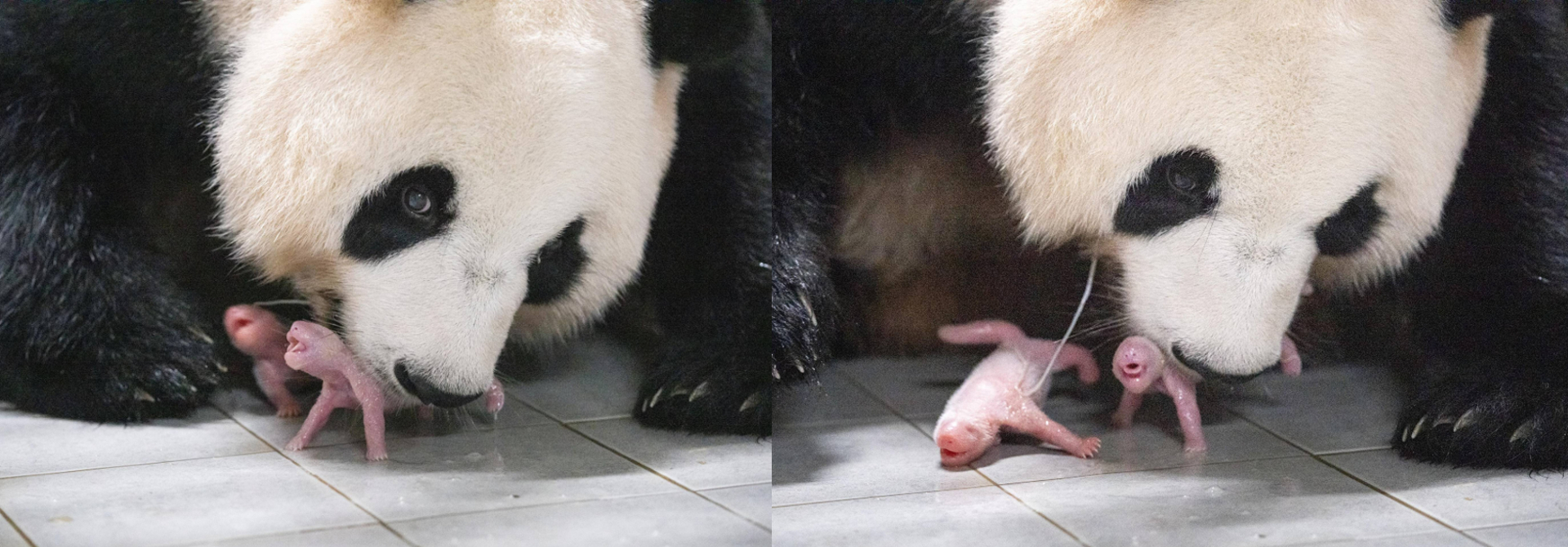Twin giant pandas have been born at Everland Zoo, a first for Korea. Proud panda parents Ai Bao (爱宝, age 9, female) and Le Bao (乐宝, age 10, male) mated naturally, without artificial breeding techniques, and in the early hours of July 7 Ai Bao gave birth to two female cubs. The first weighed 180 grams and the second, born about 110 minutes later, 140 grams. The mother and babies are all healthy, according to Everland officials.
Finding a panda mate
Pandas in Korea
This is the first time that twin giant pandas have been born in Korea, but it is the second time that Ai Bao has become a mother. Her first child, Fu Bao, was born on July 20, 2020 , weighing in at 197 grams. Fu Bao is now a much sturdier 98 kilos. Parents Ai Bao and Le Bao came to Korea from Dujiangyan Panda Ark in 2016.
When will the public see them?
In the meantime, curious panda fans can monitor the growth of the twins and how the panda family is doing through the YouTube channels Everland and Talking Zoo Ppuppa TV .












